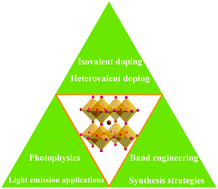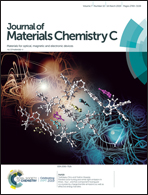B-Site doped lead halide perovskites: synthesis, band engineering, photophysics, and light emission applications
Abstract
Lead halide perovskite (LHP) semiconductors with the general chemical formula ABX3 are now being widely investigated for a variety of applications including but not limited to high-efficiency photovoltaics (PVs) and light-emitting diodes (LEDs). Introducing impurity atoms into the LHP host through doping imparts new and interesting magnetic, electronic, and optical properties. Recent studies of doped LHPs have demonstrated great potential for their optoelectronic applications. In this review, we focus on the recent progress in B-site doped LHPs including isovalent metal ions such as alkaline-earth metal ions (Ba2+, Sr2+), transition metal ions (Mn2+, Zn2+, Cd2+, Ni2+), and heterovalent metal ions exemplified by rare earth ions, Al3+, Fe3+ and Bi3+. In particular, electronic band engineering and electron/energy transfer processes in relation to doping are discussed in detail. We also highlight light emission applications of doped LHPs that take advantage of their strongly luminescent properties. Finally, we briefly discuss some remaining challenges and possible future directions for further research and development.

- This article is part of the themed collection: Recent Review Articles


 Please wait while we load your content...
Please wait while we load your content...
